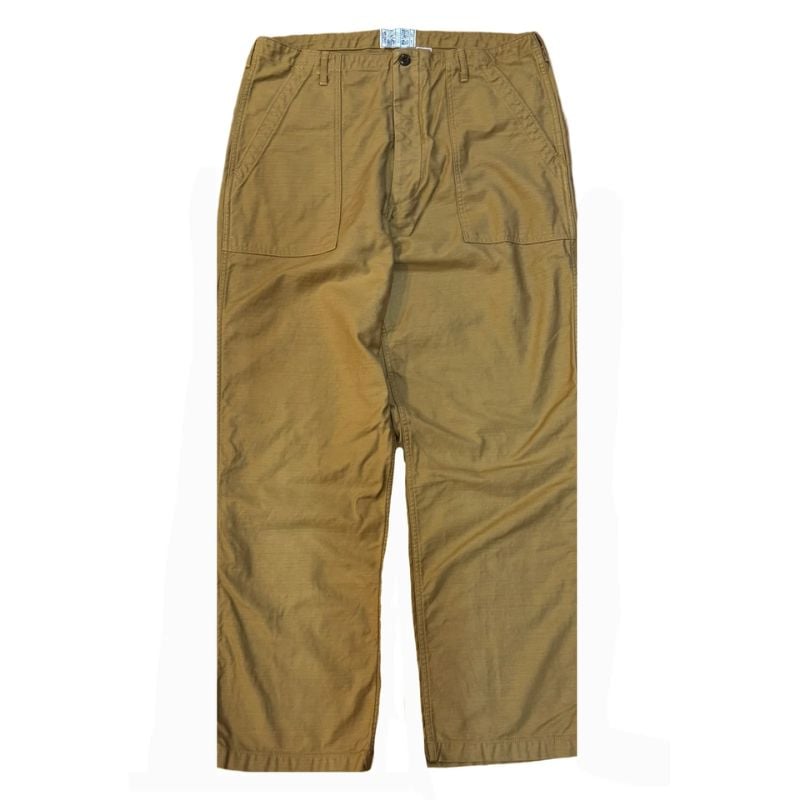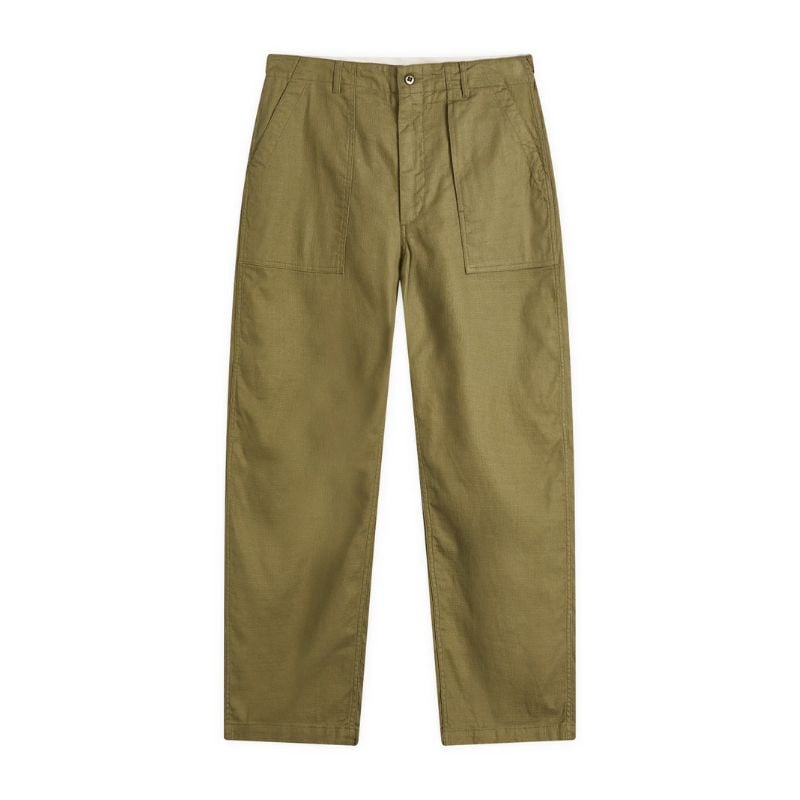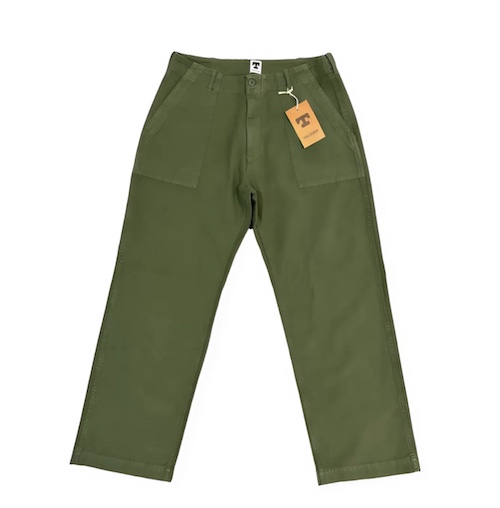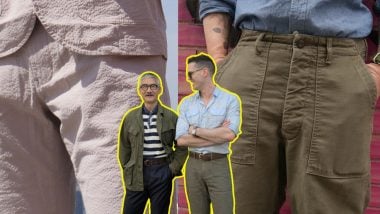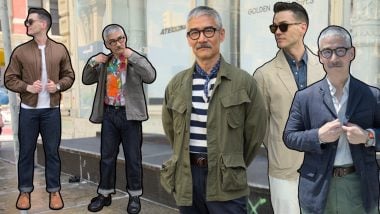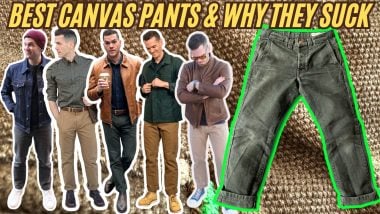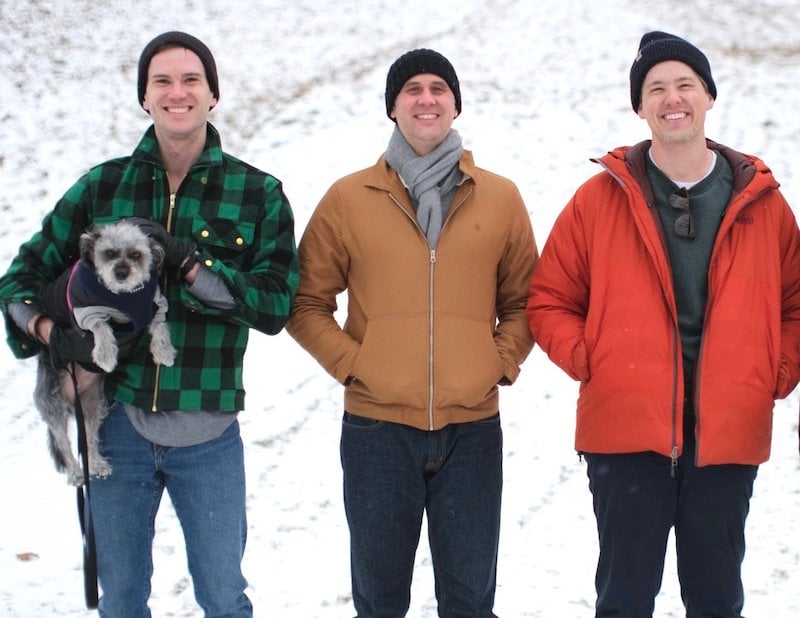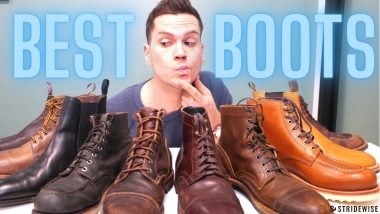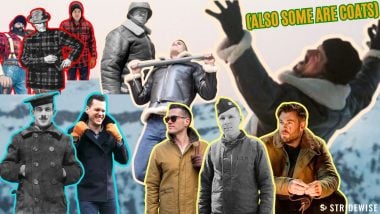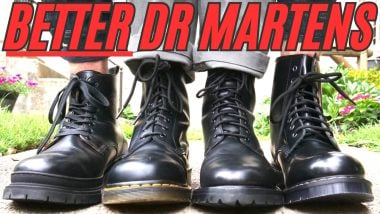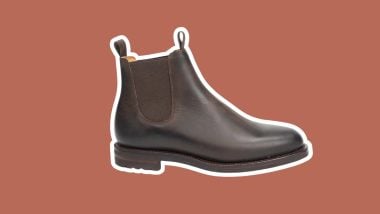How to Wear Fatigues: The Most Underrated Casual Pants
“The best casual pants for hot weather.”
“The best way to wear boots in summer.”
“The best pants for a denim jacket.”
We’re talking about how to wear fatigue pants, which are sometimes called baker pants.
An irreplaceable staple of the casual wardrobe, I only just started wearing them last year and I “only” own a pitiful three pairs of them. So to help me learn all about fatigues and how to wear them, I invited the much more experienced and wonderful Peter from Peter’s Prism over from Manhattan to walk us through his huge collection of fatigues and what he’s learned about them.
We’re going to talk about what fatigue pants are, the very interesting material that they’re made from, different types of fatigues, the best and worst pieces to wear with them, and common questions that people ask about them.

What Are Fatigues?
- Military-style pants first produced in the 1950s as the OG-107
- Popularized as trousers for jungle warfare during the Vietnam war
- Traditionally made from cotton sateen, a weave that’s good for hot weather
- Identifiable by loose fit and patch pockets on the front
- Sometimes called baker pants
“Fatigues originated as military pants that were introduced in the Korean War in the 50s,” Peter explains. “The original model was called the OG-107 and made from olive green cotton sateen, but today you can find fatigue style pants in a wide range of colors and even fabrics. Fatigues are about as casual as pants can get; I’d put them on the same level of casual as jeans.”
Lightweight, not too baggy, and perfect for summer, these are some of the most accessible fatigue pants on the market.
The traditional fatigues are made of cotton sateen and have patch pockets on the front, button closure flap pockets on the butt, button tabs on either side of the waist (so soldiers could adjust the fit without needing a belt), and a loose fit to allow for the kind of dynamic movement you’d need in the field.
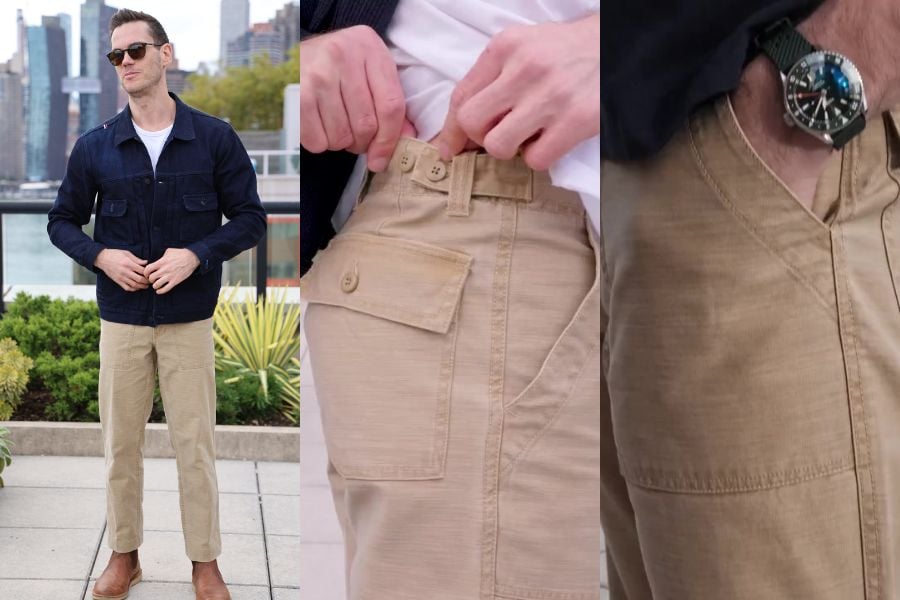
These days you can find a lot of pants called fatigues that don’t adhere to all of those specs: you can get slim fits (like Tellason’s), some don’t have waist adjusters (like Left Field’s), and they can be found in a huge range of fabrics (Orslow and Engineered Garments are best known for that).
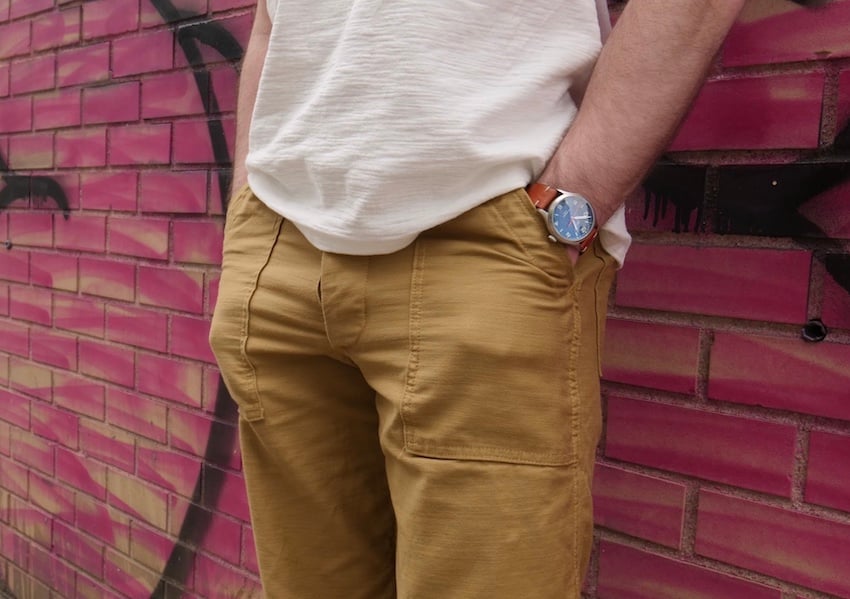
But I think it’s fair to say that the defining element of fatigues is the patch pockets at the front: they’re sewn onto the front of the pants instead of having pocket bags beneath the fabric like chinos or jeans.
You can find a wide variety of pants called “fatigues” these days, but they’ll always have those patch pockets on the front.
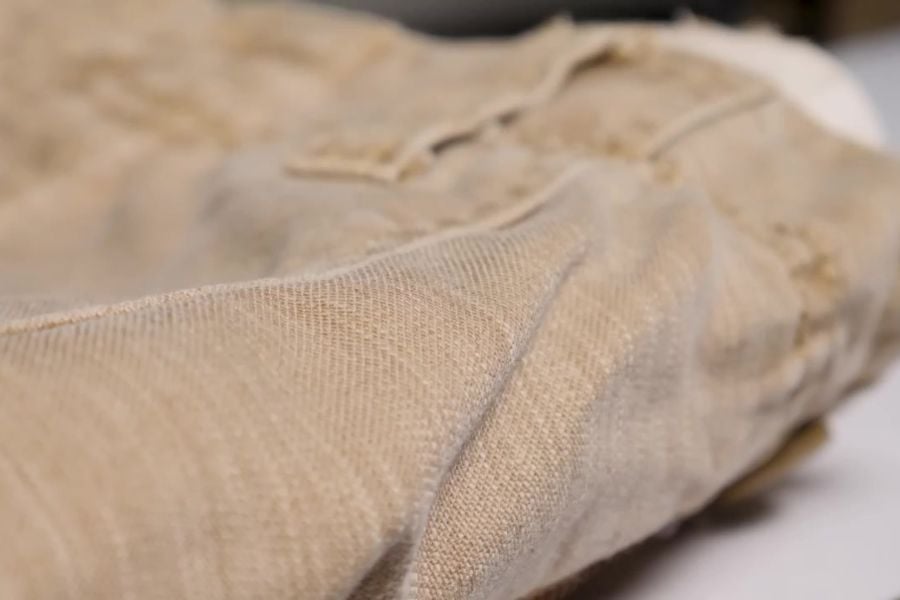
What is Cotton Sateen Fabric?
- A type of weave that does a good job of balancing durability and breathability
- Tends to have a slightly glossier look than other cotton fabrics
- Identified by horizontal streaks along on the surface
- Fatigues usually use a lightweight sateen, weighing 9oz or less
There have been many pants called fatigues but they’re usually made of cotton sateen.
There are three main kinds of fabric weaves:
- Twill weaves (eg. denim)
- Plain weaves (eg. canvas)
- Satin weaves

Twill looks like it’s covered in diagonal lines, plain weaves have a more crosshatched look, while a satin weave produces a look closer to horizontal lines.
These fabrics all have warp and weft yarns, referring to the yarns running vertically and horizontally on the loom when they’re woven together. With a satin weave, the warp yarn lies (or “floats”) on top of weft yarns. Satin weaves are usually shinier because of that weave: the surface doesn’t scatter light as much as twill and plain weaves, which appear more textured and complex.
“Even very authoritative sources disagree about the difference between satin and sateen, but I can confirm they’re not the same thing,” says Mohsin Sajid, a textiles professor and denim historian who I went to for some clarity. “Satin has a high, glossy sheen, while sateen has a more subtle, muted shine. Sateen is generally more durable and easier to care for than satin.“
When it comes to casual summer pants, sateen fatigues have the edge over denim.
Many will tell you it’s satin when it’s silk, sateen when it’s cotton. But when Peter insisted my fatigues from Left Field NYC were definitely sateen, I noted that the product page describes them as an authentic Japanese reproduction of a cotton fabric used on 107 fatigues in the early 1960s — and it’s described as satin, not sateen.
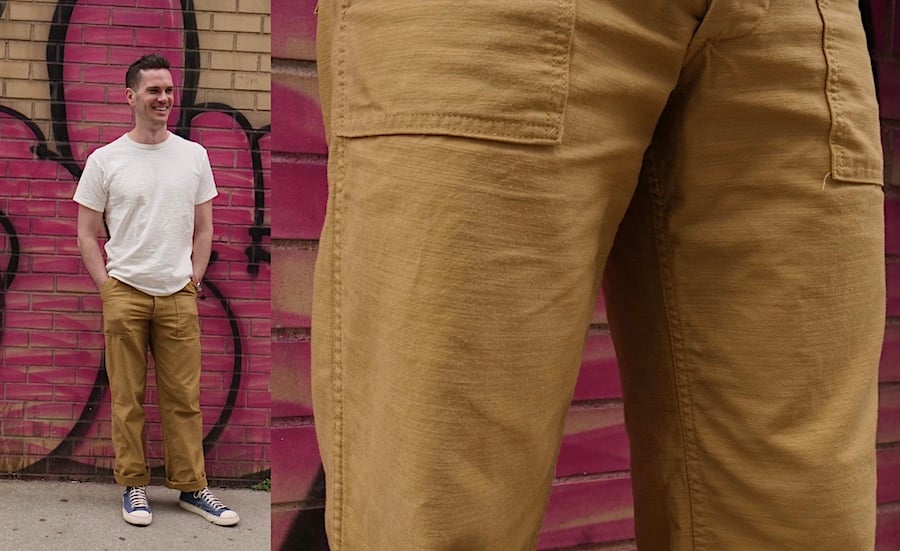
Made of a Japanese reproduction of a 12-ounce cotton satin used in the 1960s, these fatigues come in a refreshing range of colors and they're cut and sewn in the USA.
I could go on and on about weave controversies, but that’s not really why we’re here. The take-home message is that cotton sateen fatigues are a little shinier, faster drying, and more comfortable in hot weather than other weaves, especially twill weaves like denim.
That’s a big reason why, when it comes to casual summer pants, fatigues have the edge over denim.
Further Reading
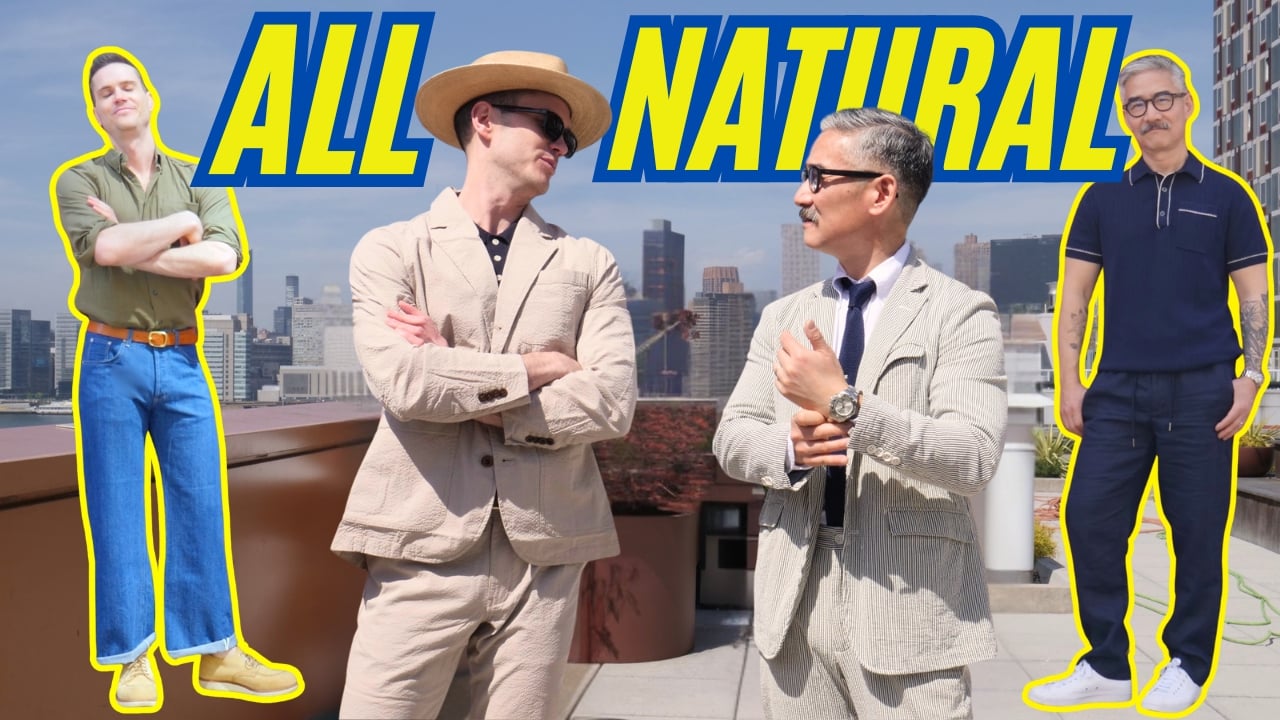
The Best Breathable Summer Fabrics in Menswear
We share our favorite breathable fabrics for guys to want to look great in the summer.
Learn more →
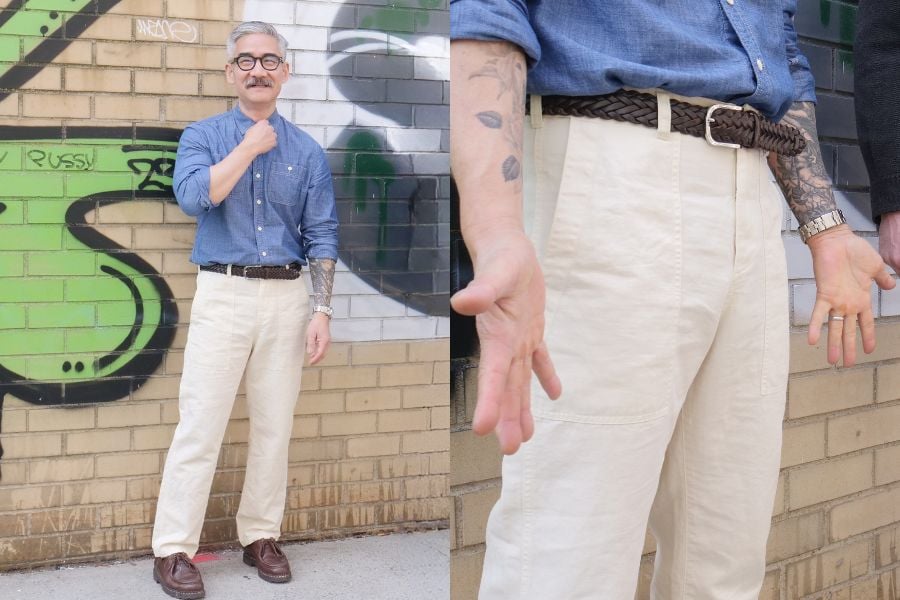
Variations of Fatigue Pants
- Our collection includes fatigues made of denim, chambray, ripstop cotton, and linen.
Not all fatigues look like they were worn in Vietnam.
“I have ripstop cotton fatigues and straight-up denim fatigues from Engineered Garments,” says Peter. “I have a cotton–linen blend from Alex Mill that I don’t think is sold anymore. And you’ve got a pair in chambray, right?”
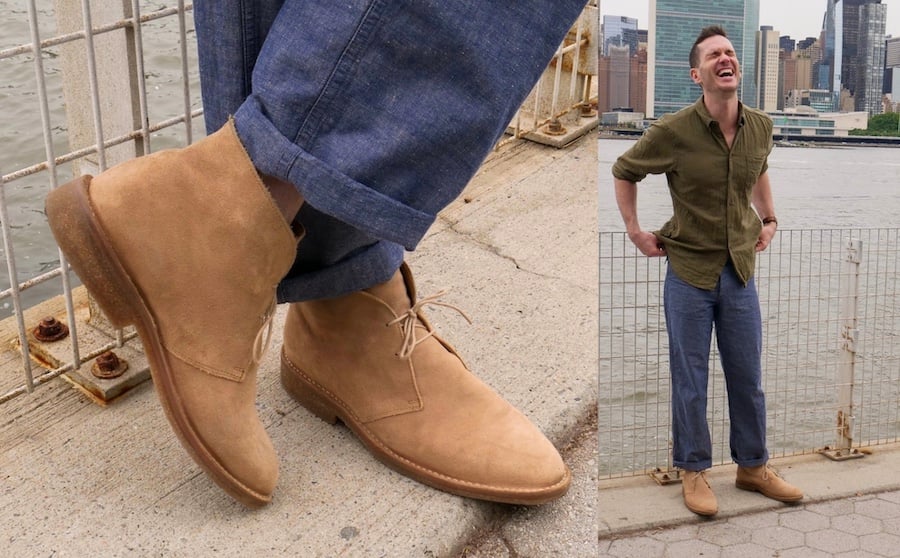
I do! Engineered Garments and Orslow are two brands that are very well known for their range of fatigues, which include a range of colors in sateen and other fabrics. Neither have their own online stores, so you need to Google around to see who’s selling what.
But my chambray pair is from Orslow in Japan — while they’re sold out right now, Withered Fig and Canoe Club stock a good range of their fatigues. (Even though we don’t make commissions when we link to them, damn it.)
Further Reading

What is Chambray, and is it the Best Casual Shirt Fabric?
I met up with Peter to learn more about why chambray is such an underrated fabric. Learn more →
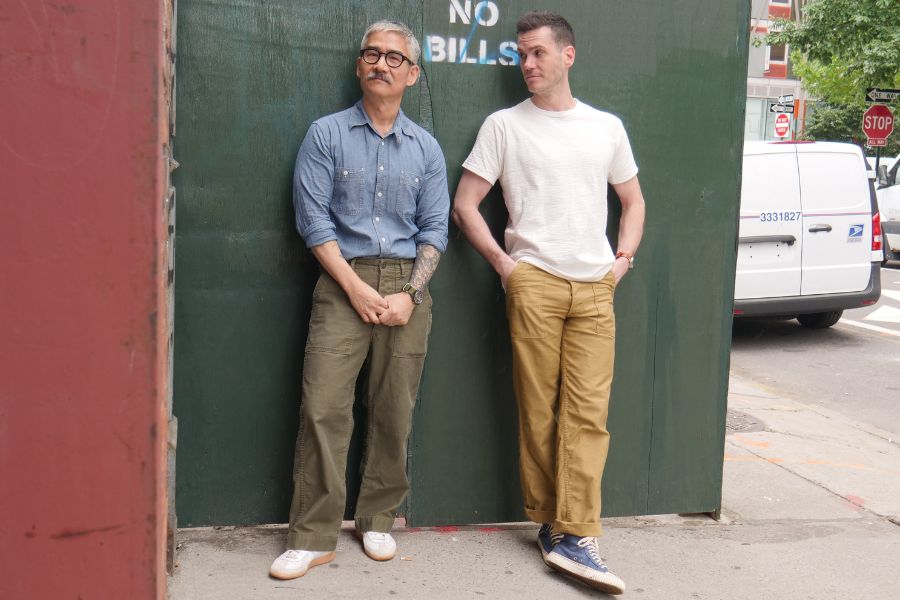
To Green or Not to Green?
Here’s a question some guys (me) are more concerned with than others (Peter): Is it OK to wear green fatigues?
“Yeah, I’m wearing green fatigues now. I have several pairs,” says Peter. “There are very few color pairings that work as well as a chambray blue and the olive green of the original OG 107s fatigues. Dark denim is also fantastic with this color; it’s a big reason why fatigues and denim jackets are so famous for working together so well.”
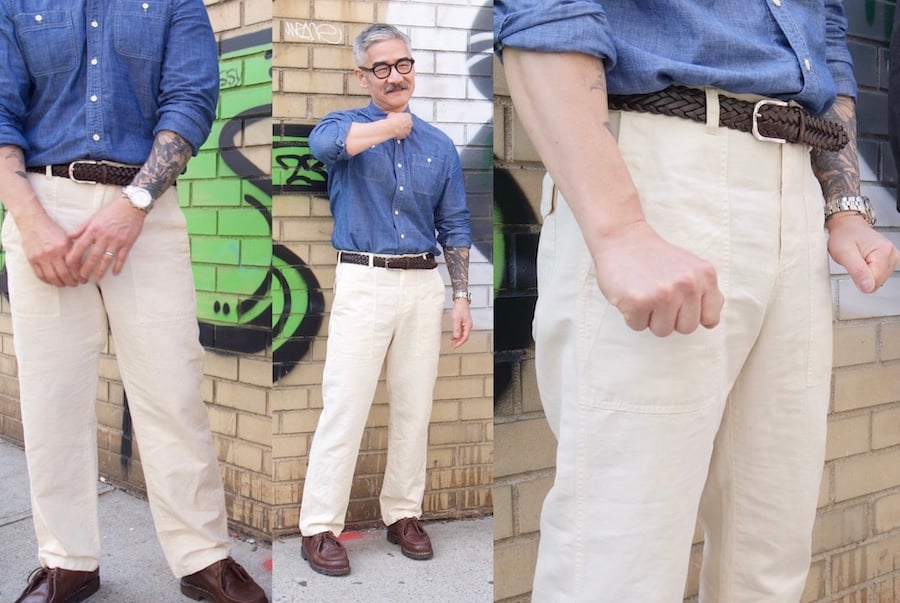
I’m a little more conflicted about wearing green fatigues, but not because I think anyone who does so is supporting the military industrial complex. The thing is, the first time I ever wore fatigues, it was a green pair that was given to me by Copper Denim, this awesome denim brand in Ho Chi Minh city — I got them when I filmed this awesome video below:
I was so excited to finally have a pair of fatigues, especially since I spend so much time in Southeast Asia — “Finally, I’ve got the perfect pants to wear with a denim jacket! And I can wear boots in summer so easily now!”
I wore them out the next day, and slowly realized I was a white guy walking around Saigon in green army fatigues… You get why that might have felt a little inappropriate.
Anyway, that was the first time I ever wore fatigues, and I think it left a lingering aversion to the more military-coded versions of these pants — but that’s just me! I know that was a very unusual experience, and I love deck jackets and World War 2 service boots way too much to judge anyone who likes military-inspired menswear. If you like green fatigues, go for it!
Further Reading
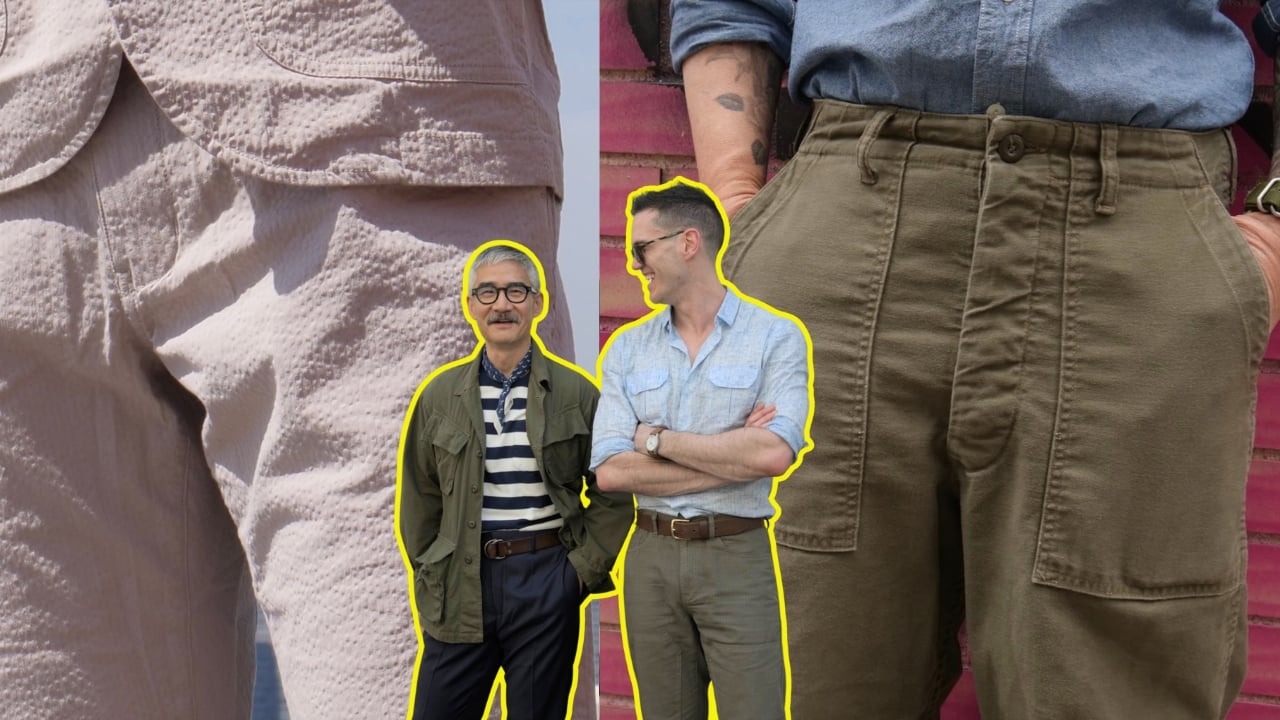
The 6 Best Summer Pants for Men? Breathable Casual and Dressy Trousers
Peter and I voted fatigues as the best pants for summer. If you want something less casual, we’ve also got you covered. Learn more →
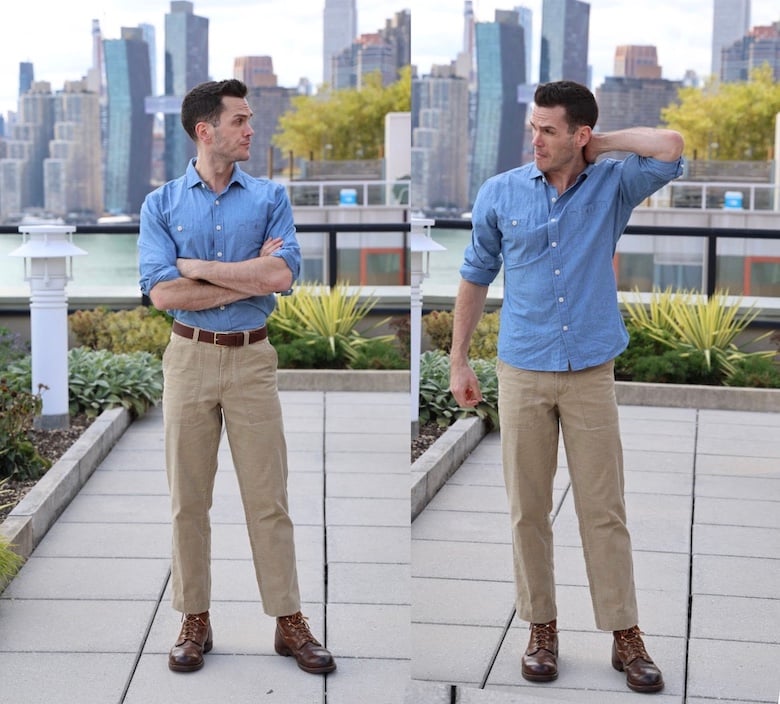
Do You Tuck Your Shirt Into Fatigues?
I never used to tuck in any shirts if I wasn’t dressed for the office, but like a lot of guys, I started tucking more often as I got older. Still, I can’t yet bring myself to tuck into jeans because of how damn casual those pants are, and aren’t fatigues at about the same level of casual?
“It really depends on the shirt you’re wearing and whether the look you’re going for is more pulled together or more relaxed,” says Peter. “It also depends on the shirt. A camp collar shirt with a squared off hem is not meant to be tucked. But you could tuck an Oxford cloth button-down into your fatigues — you could even tuck a t-shirt.”

Hold on, there, buddy. Tucking a t-shirt — the most casual shirt — into fatigues — the most casual pants? Is that allowed?
But that week, I happened to visit Christian McCann, the guy who runs Left Field NYC in Queens, and asked him his thoughts on the topic. His response: “Well, they’re military pants. Everything gets tucked in the military.”
Game changer: there’s a case that fatigues are the best casual pants for tucking into.
Anyway, I think in the 2020s, anyone can tuck into anything and it’s fine. So far, I’ve been too much of a millennial to feel comfortable tucking a t-shirt into anything, but I’m sure I’ll get there.

How to Style Fatigues
- Fatigues are as casual as jeans, but easier to tuck into
- Work well with rumpled shirts and casual tops
- Perfect for classic casual wear like t-shirts, chambray, and denim jackets
- Footwear-wise, high top sneakers and desert boots are peak
- Military heritage makes fatigues great for pairing with boots, especially desert boots
“I like to think of fatigues as an alternative to jeans,” says Peter. “They’re both casual, tough, outdoorsy, and classic Americana with a lot of cultural cachet. If something works with jeans, chances are it’ll work with fatigues.”
When it comes to casual pants, the classic choices are jeans and chinos, with chinos being significantly more versatile — they work with both t-shirts and with the business casual shirt and tie. So are fatigues similarly versatile, or solidly casual?
“I think of fatigues differently than khakis or chinos,” Peter explains. “Chinos tend to not have a lot of detail, especially when they don’t have pleats and are flat front. Less detail means more minimal, and fatigues have more detail with the patch pockets. So their whole vibe is more chill, especially since they tend to have a loose fit.”
While the vibe of jeans is a little more durable and workwear than fatigues, both are superb with a simple t-shirt and sneakers.
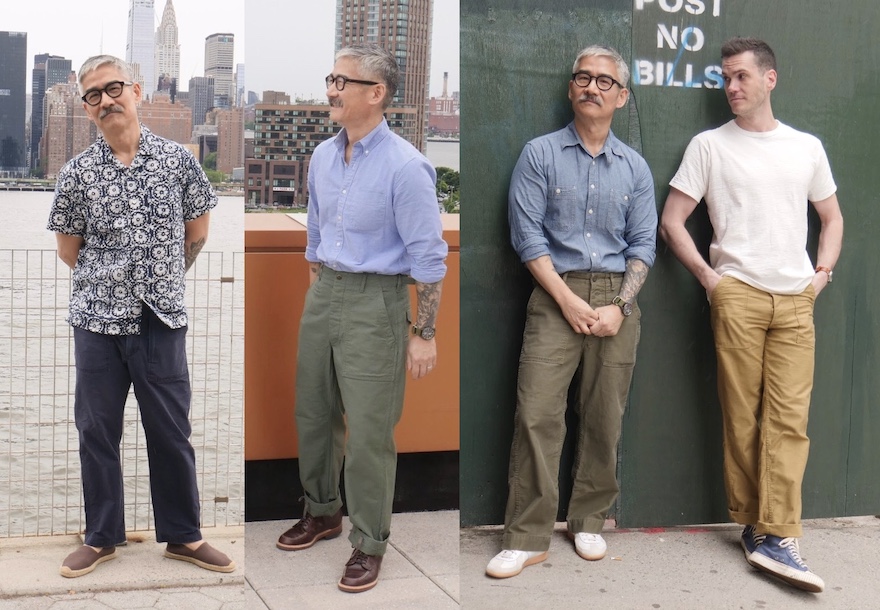
Downside: You can’t really dress up in fatigues or wear them to the office. But they look great with t-shirts, chambray, denim jackets, and more casual button ups like rumpled linen, chambray, and even Oxford cloth.
Personally, if I’m not also wearing linen pants, I often find myself unsure of what to wear linen shirts — jeans seem too rigid, chinos seem too minimal. But sateen fatigues have a balance of texture, detail, and relaxed vibes that work well with linen shirts.
What shouldn’t you wear with fatigues? Dress shirts, workout apparel, and I don’t really like them with polo shirts either. They feel like different kinds of casual.
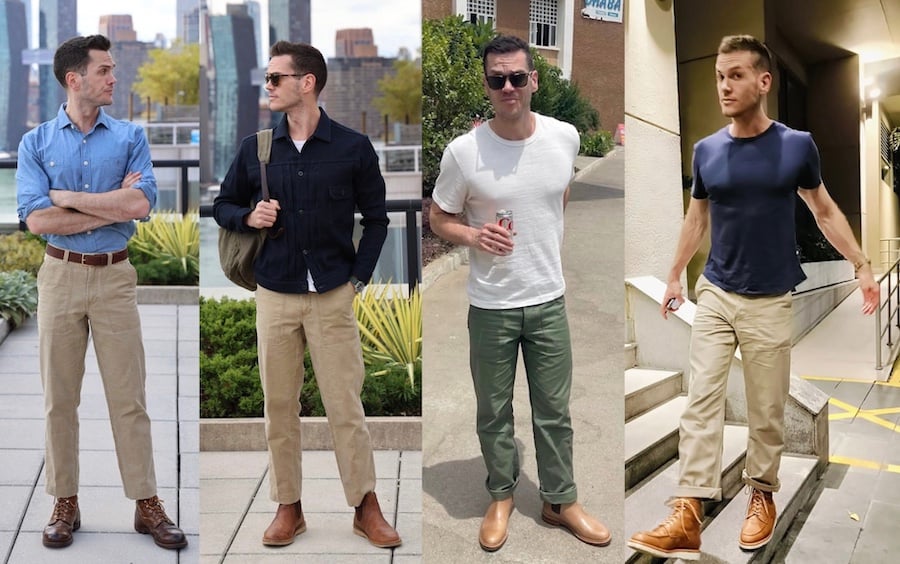
Footwear for Fatigue Pants
- Keep it simple and casual: boots and sneakers are best
- Lean toward classic and minimalist
- Avoid dressier footwear like sleek loafers or oxfords
If you’re a boot guy (and I very much am), you miss being able to wear jeans and boots when it’s hot out. I’m here to offer you relief: fatigues are how to wear boots in summer.
With green fatigues, I’m an especially big fan of Chelseas in natural (meaning undyed) leather, like Grant Stone’s in Dune. That’s what I’m wearing with the white t-shirt in that little collage above.
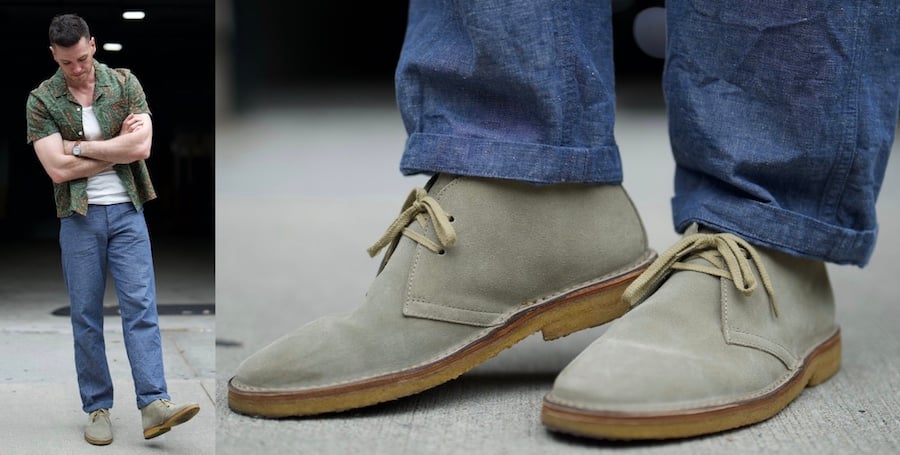
But the best boots for fatigues are desert boots, which are what you call chukkas made with crepe soles and (usually) suede uppers.
“Desert boots really can take you a lot of places,” says Peter. “They pretty much have the exact same balance of relaxed, summery, and durable that fatigues have. They also work whether you’re wearing fatigues with a t-shirt or a nicer button down.”
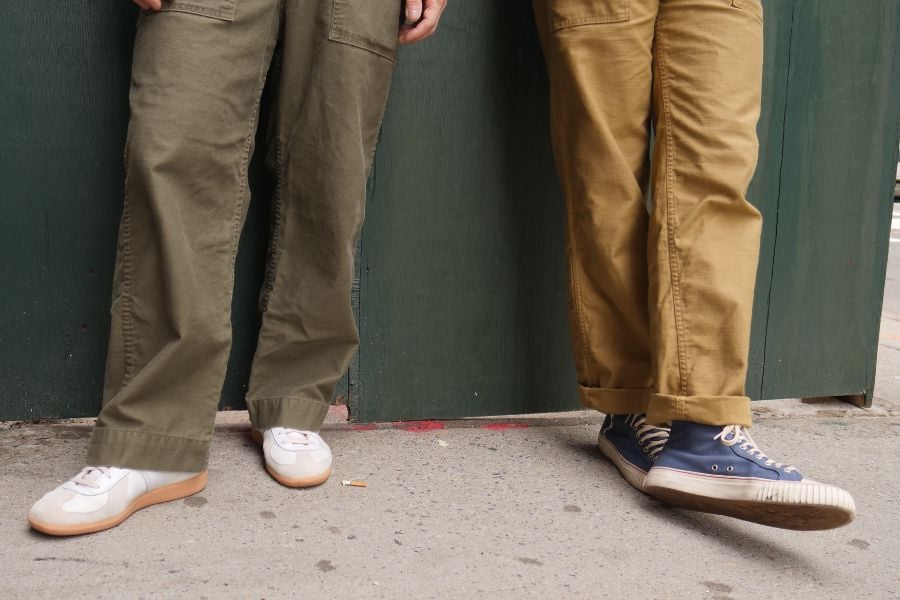
Sneakers are another natural fit — especially more minimalist sneakers, especially retro ones, and especially high-tops. Chuck Taylors, PF Flyers, and Nothing New are all canvas high tops with the perfect look for fatigues.
“There’s something about the way the leg drapes over the shoe that just looks right,” says Peter.
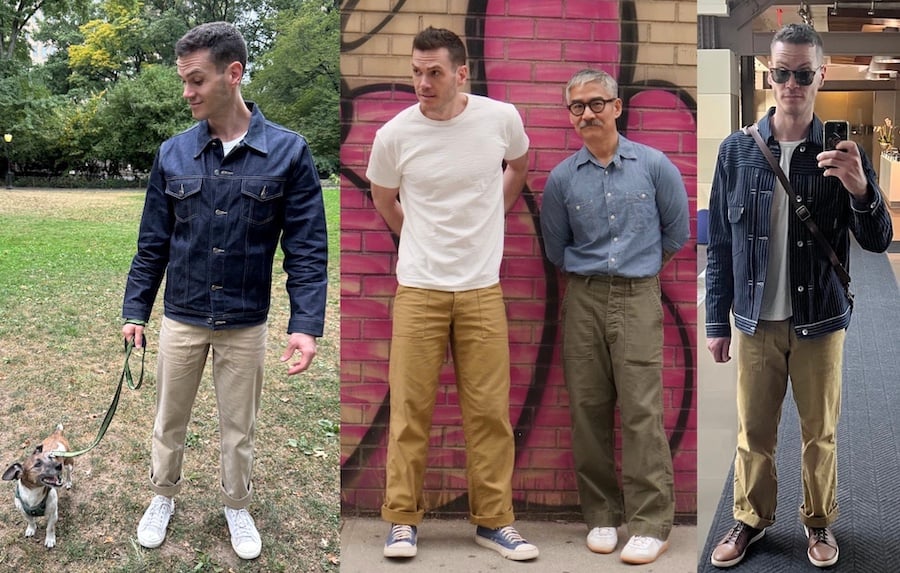
So what doesn’t work with fatigues?
“Certain shoes do not work with fatigues,” says Peter. “I think a really structured, shiny kind of a shoe looks a little awkward, simply because fatigues are relaxed — the whole vibe is chill. If you wear something like structured brogues or shiny loafers, it’s a little off.”
On my end, I’d avoid especially busy and modern sneakers, like Jordans. Simple models with a slightly throwback look work best with the “classic” vibes of fatigues, though this isn’t a huge deal.
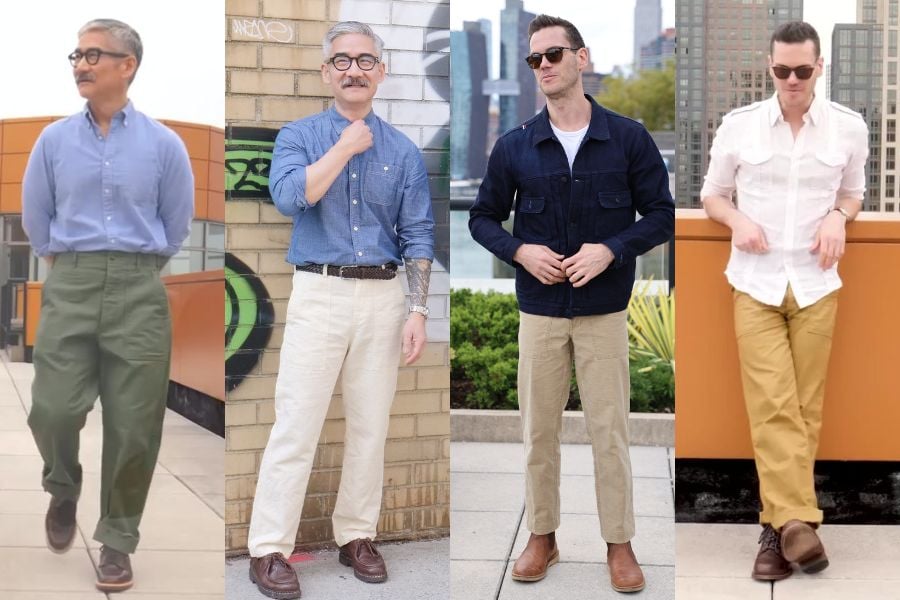
Best Brands for Fatigue Pants
- Engineered Garments and Orslow have the best variety of fabrics
- Left Field NYC makes 12oz fatigues for year round wear
- Stan Ray and Tellason are good value for USA-made.
- Taylor Stitch and Bronson might be the best value.
One issue here is that Peter and I both wear a lot of stuff that’s hard to get or discontinued.
Alex Mill stopped making his white linen fatigues, Engineered Garments stopped making his hybrid carpenter-fatigue pants, Taylor Stitch doesn’t make my color of their Surplus pants, and the best value fatigues I’ve worn are from a Vietnamese brand that doesn’t have an English language website. J Crew and Buck Mason are known for solid offerings, but right now neither is selling fatigues.
But here are some good places to look.
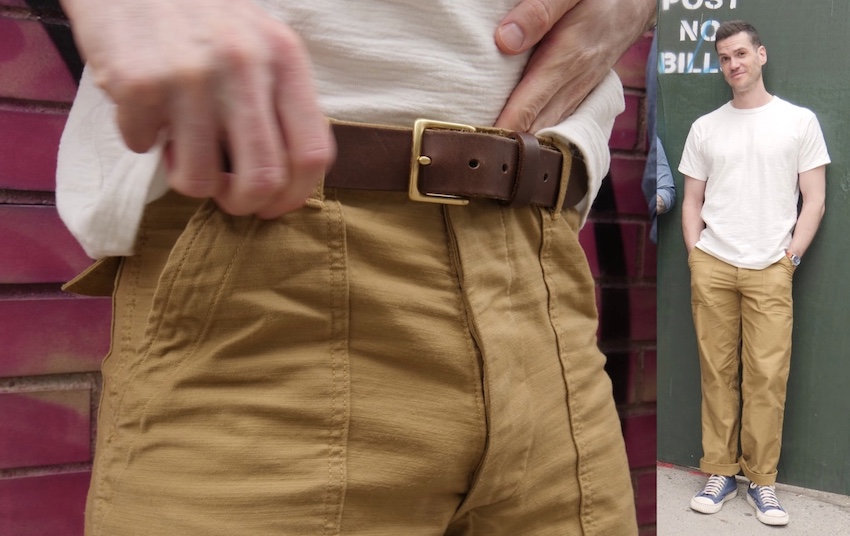
Left Field NYC
- Known for: Made in USA, burlier fabrics
I wear their “GI Pants” a lot because they’re from a small brand that make their products in the USA, the fabric is a Japanese reproduction of sateen used on military fatigues in the 1960s, the waist-to-leg-width ratio works well for my athletic build, and the fabric is an unusually heavy 12 ounces: it’s still comfy for summer, but has the right heft for colder weather too.
The downsides are that all those upsides make them expensive, plus there are no waist cinches; you’ll need a belt.
Made of a Japanese reproduction of a 12-ounce cotton satin used in the 1960s, these fatigues come in a refreshing range of colors and they're cut and sewn in the USA.
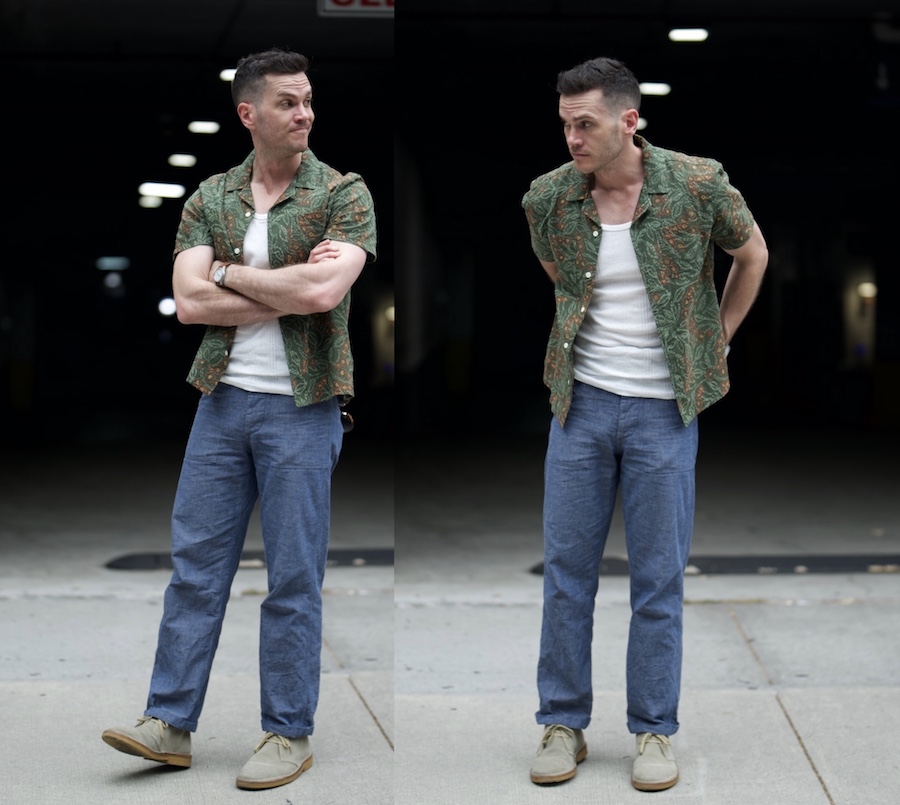
Orslow
- Known for: Japanese provenance, range of fits and fabrics
This Japanese brand is best known for their fatigues, which are sold in two fits and a huge range of colors and fabrics. I’ve got some wonderfully weird chambray ones, but of course, they sell a lot of fatigues in your regular sateen as well.
They don’t have their own online store, and a lot of places that sell them only sell a limited variety, but Canoe Club and Withered Fig have good selections — the latter’s nine-month review is a great read.

Engineered Garments
- Known for: Made in NYC, inventive patterns
“One of my go-tos is Engineered Garments, explains Peter. “They release fatigues every season, and I love the way they experiment with details — I have fatigues from them in cotton ripstop, denim, and cotton linen.”
Like Orslow, they don’t sell their own stuff, and there’s no one place online that sells all of their fatigues, but Nepenthes NY and END Clothing have some.
Highly sought-after and hard to find, this New York–based brand makes fatigues with unique twists.
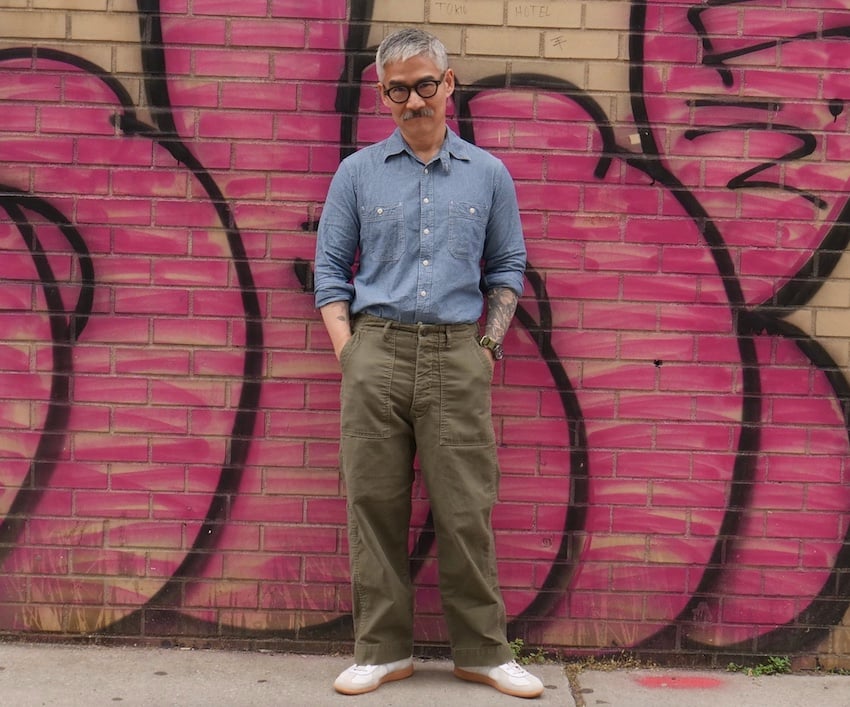
Bronson
- Known for: Great value
Bronson doesn’t do a huge range of colors, but they have several versions of the classic olive green fatigues at unbelievable prices: everything’s under $100. It’s made in China, but the specs are pretty faithful. Check them out here.
Tellason
- Known for: Made in USA, slim fit option, range of colors
This small brand has a good reputation for their fatigues, and their slimmer fitting models have become particularly popular for those who like the sateen and styling of classic fatigues with a more form-fitting look.
This USA-made brand has a good reputation for the variety of fits and colors on their fatigues.
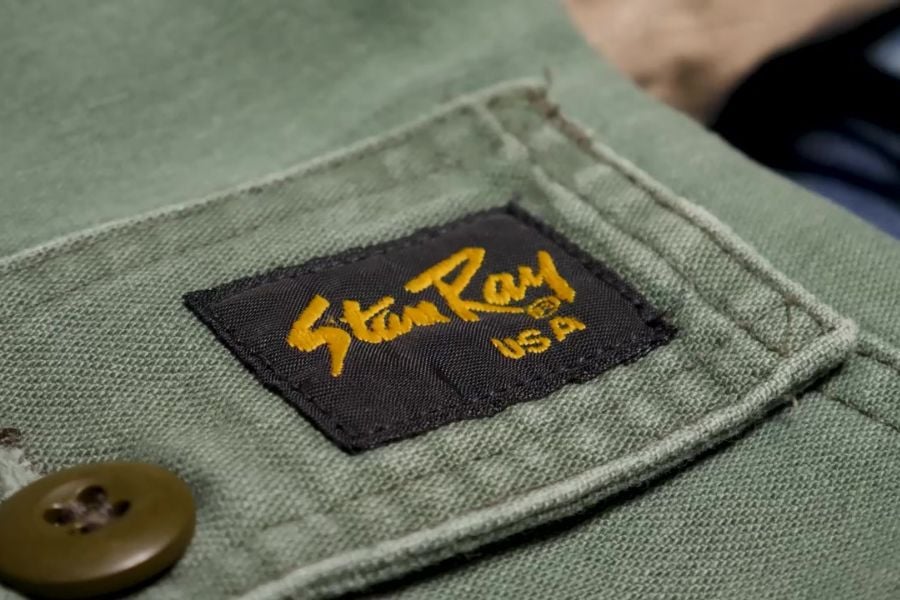
Other good brands are Stan Ray for another USA-made option, Taylor Stitch for a good balance of quality and value (I’m wearing mine in a lot of these photos), and Alex Mill has some nice options that are often on sale. Buck Mason and J Crew have sold good ones in the past, but nothing’s available at the time of writing.
Lightweight, not too baggy, and perfect for summer, these are some of the most accessible fatigue pants on the market.
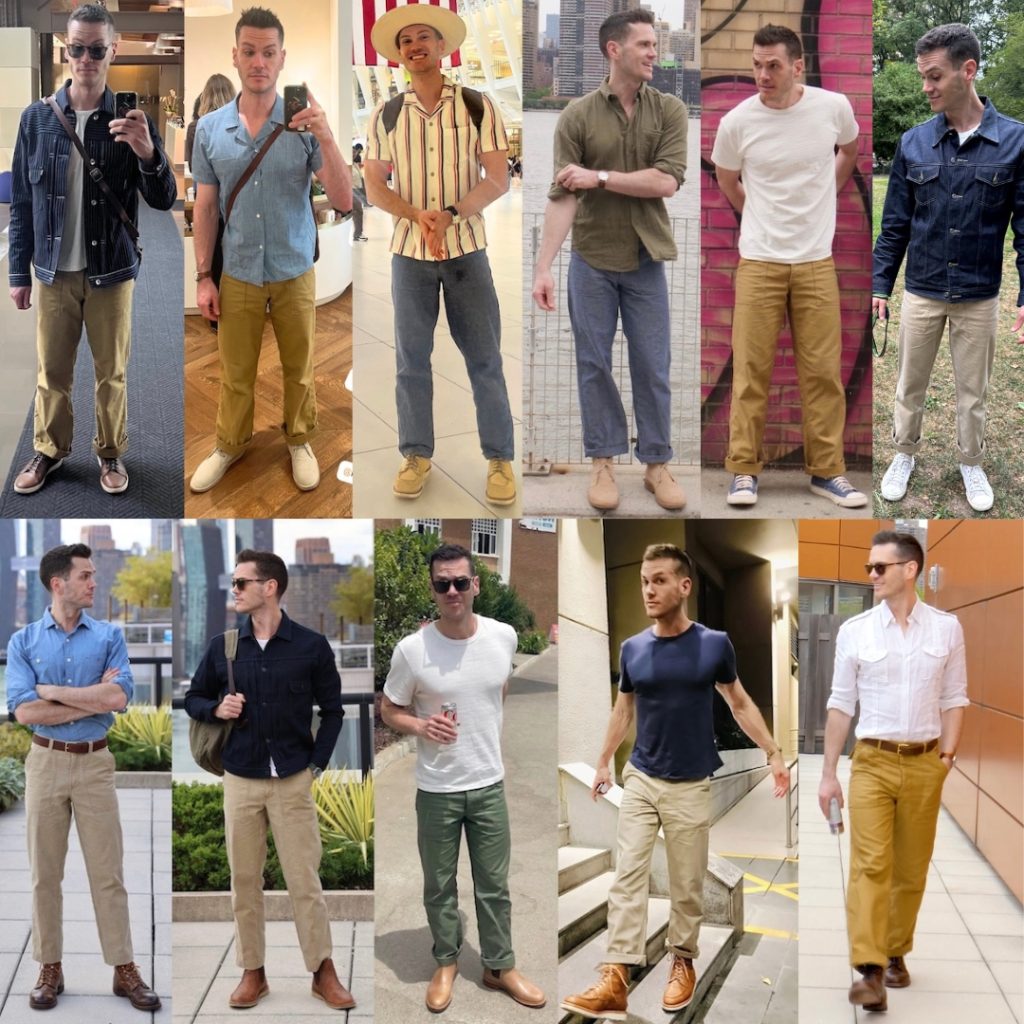
Conclusion
For casual pants-that-are-not-jeans, it’s hard to beat fatigues: their balance of comfort and durability is unmatched in the heat, but sateen has a substantial enough look that they don’t look out of place (like linen does) in cooler months.
They rock with denim jackets, t-shirts, boots, minimalist sneakers, linen, chambray — all top tier favorites here at Stridewise.
Whether you’re one of the growing number of guys who would rather trousers over shorts or you’re someone looking to build a casual wardrobe that doesn’t rely so much on jeans, fatigues absolutely deserve a place in your wardrobe.


